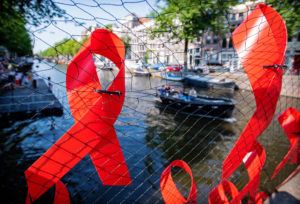World invests over $280m into search for HIV cure in six years

When the HIV virus hit the world in the 80s and inundated the world with devastation, pain, fear, uncertainty, deaths, discrimination and stigmatization ripped the world apart with sufferers on one side and the other group on the other, a few brave men and women buoyed by love, compassion and the desire to find a cure took their first steps to finding it. But funding was slow in coming. However, the AIDS community has made some great progress as investments into the search for a cure has reached $288.8 million.
People affected by HIV have been ostracized, stigmatized and often abandoned, forcing many into a life of loneliness, pain, agony and eventual suicide. And the AIDS community is set on relentlessly pursuing a cure.
When the International AIDS Society’s HIV Cure resource tracking group joined forces with advocacy group AVAC to estimate how much has been spent in research for the cure for HIV, they found that in the last six years from 2012 to 2017 an amount of $288.8 million has been invested. The amount represents an 8 per cent increase over the $268 million invested in 2016 and an increase of 228 per cent over the $88.1 million invested in 2012.
According to IAS, the public sector made the highest contribution of $272.4 million while philanthropy organisations like Aidsfonds, amfAR, the Bill and Melinda Gates Foundation, CANFAR, the Campbell Foundation, the Fair Foundation and Sidaction contributed $16.3 million. It is however, believed that the investment could be higher than the estimates because there have been significant commercial investments into the search for a cure, but companies did not respond to surveys collecting this data.
At the ongoing AIDS 2018 Conference, the community has shown commitment to relentlessly pursue a cure, as expressed by Linda-Gail Bekker, the immediate past Executive Director of the IAS in most of her presentations at the conference. Dr. Bekker handed over to new Executive Director, Kevin Osborne on July 26, 2018.
There are currently 37 million people around the world who are living with HIV and are eligible for antiretroviral treatment (ART) based on World Health Organisation (WHO) Guidelines for antiretrovirals (ARVs). However, latest available information shows that only 20.9 million of the affected individuals currently have access to ART, while the rest are excluded.
While some progress has been made in the efforts to confront HIV, there also appears to be some setback, requiring the intensification of the work to meet the needs of people affected by HIV. In 2017 alone some 970,000 people have died of AIDS.
Sub-Saharan Africa however, appears to have a very mixed story to tell. A current study by UNICEF shows that in the next 33 years, if the efforts at curbing and managing HIV does not improve outcomes, some 10 million young people aged 15-24 years will be newly infected with HIV between 2017 and 2050, and about two-thirds of those will be women and girls.
By Emmanuel K. Dogbevi, in Amsterdam, The Netherlands
Copyright ©2018 by Creative Imaginations Publicity
All rights reserved. This report or any portion thereof may not be reproduced or used in any manner whatsoever without the express written permission of the publisher except for the use of brief quotations in reviews.
